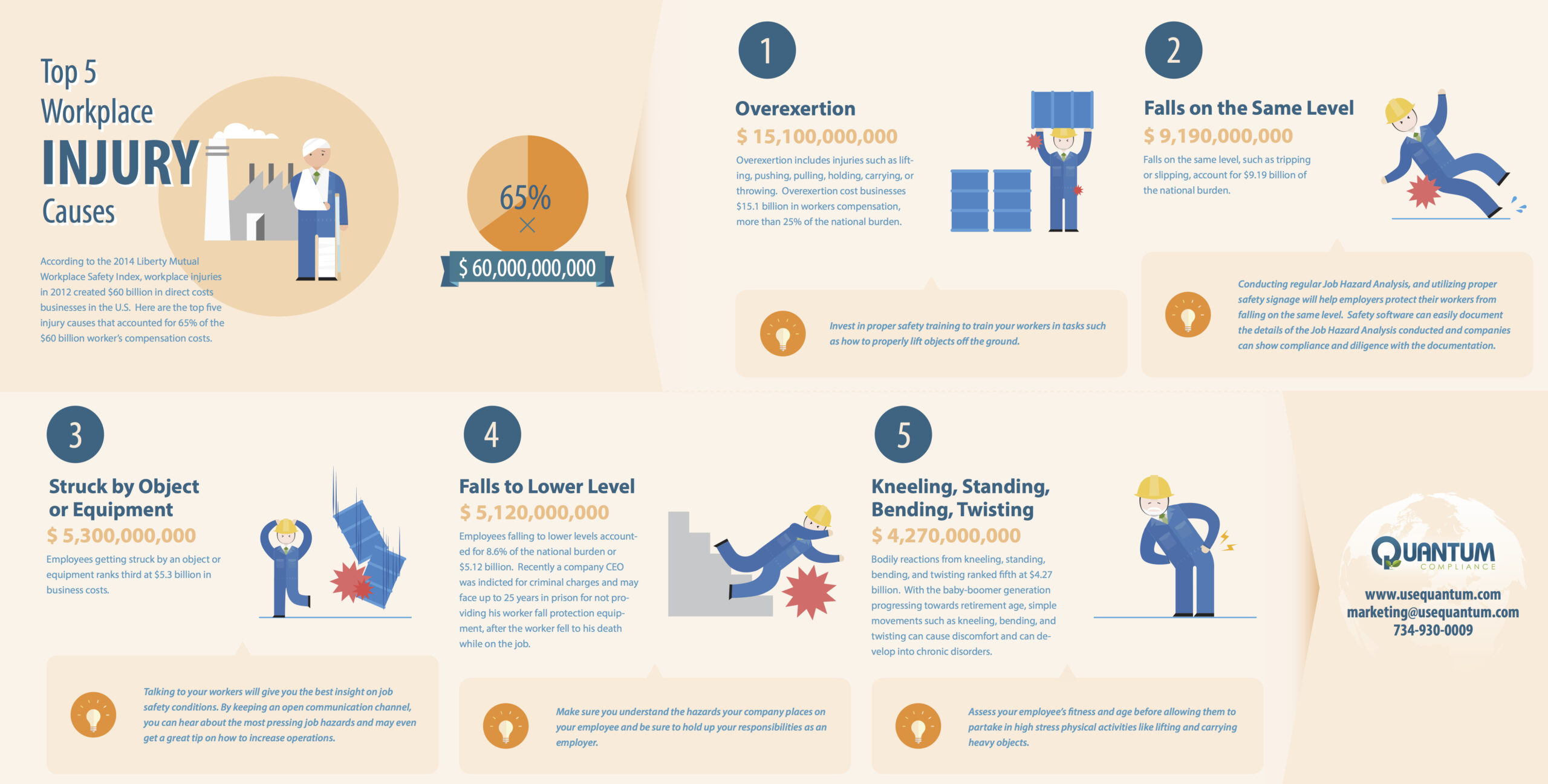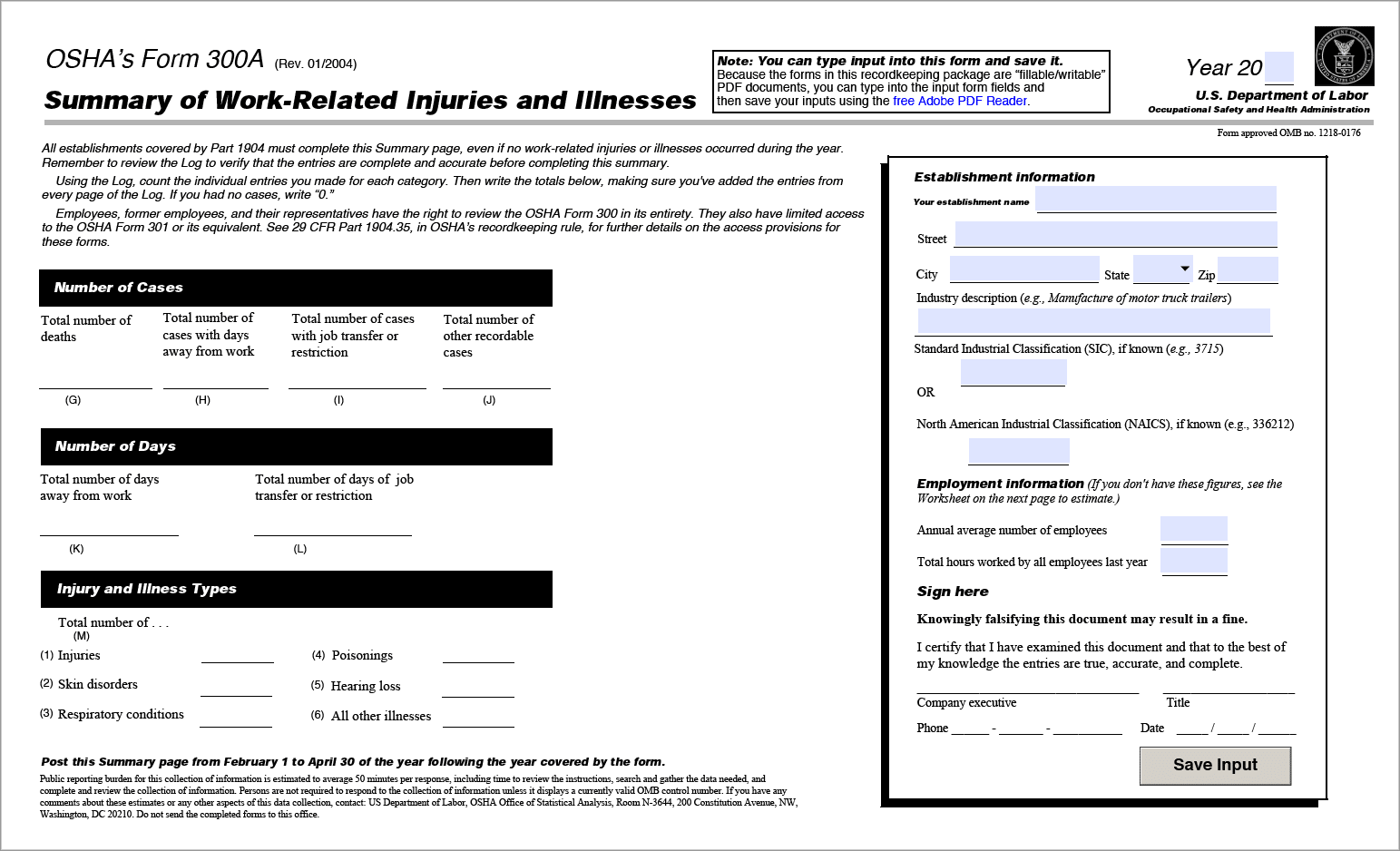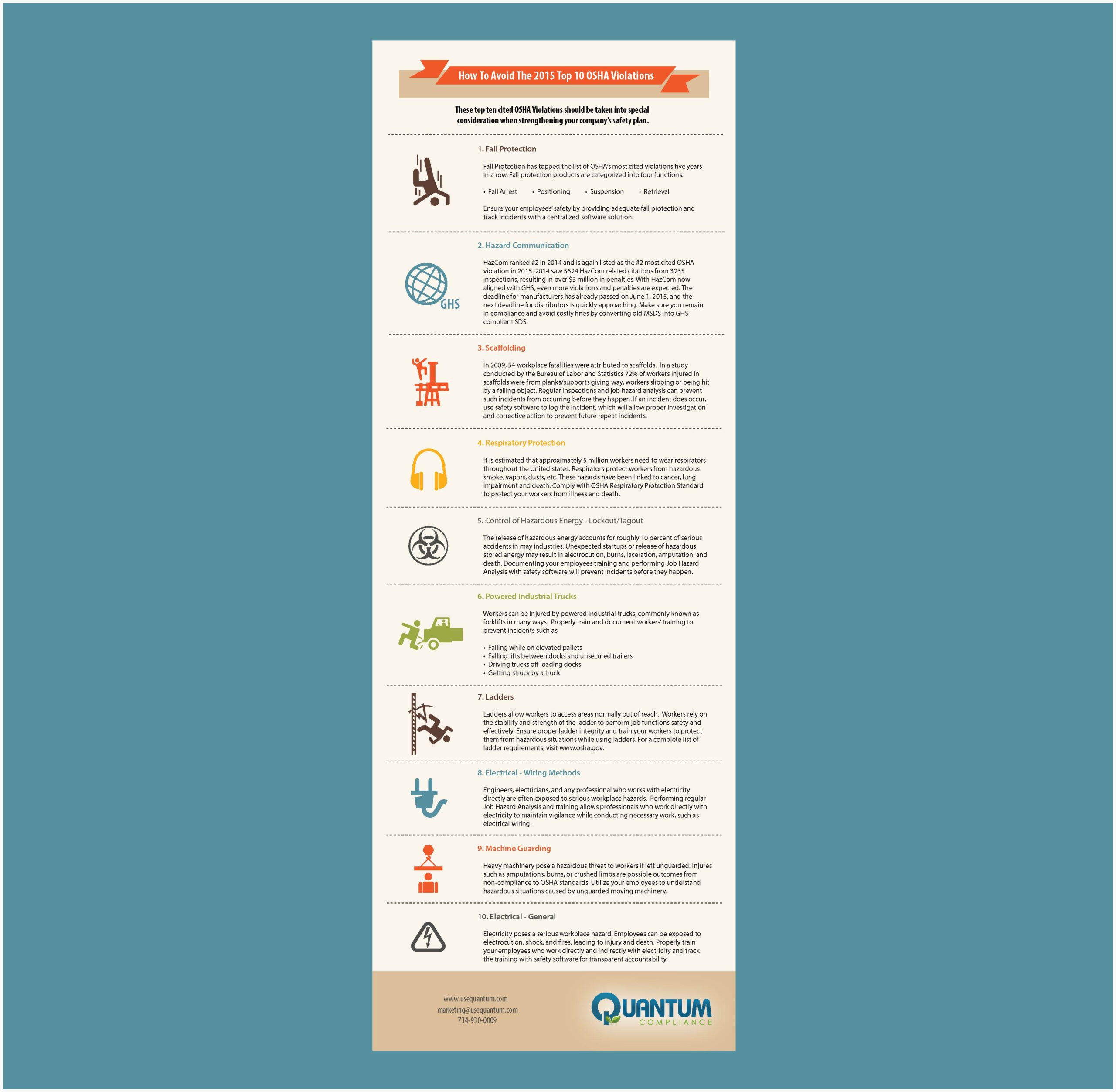
Infographic: Top Five Workplace Injury Causes
ON THIS INFOGRAPHIC: According to the 2014 Liberty Mutual Workplace

On July 1st of 2017, OSHA will begin phasing in new injury & illness reporting requirements.
When this rule is in place, more than 400,000 employers will be required to submit annual illness and injury reports to the federal government. Many business owners will be caught unprepared by this regulatory change; make sure you are not one of them.
Contact our experts today!
The objective of this new rule is for OSHA to compile a large database of workplace injuries and sicknesses. This will allow OSHA to better identify abnormally hazardous work conditions that previously might have gone unnoticed. OSHA plans to make a portion of this database publically available online, which will put many businesses’ safety records a click away from prospective employees and clients. When this rule takes effect, safety violations will not just come with a fine, but also with a great deal of embarrassment.
The full text can be found here, but the gist of the rule is pretty simple: once the rule is phased in completely on March 2nd, 2019, all workplaces with more than 250 employees (plus workplaces with 20 or more employees in certain industries) will be required to file their OSHA 300A form every year. Larger companies will be required to submit full form 300 and 301 forms as well. This whole process will take place electronically.
The other portion of the rule addresses concerns that workplace injuries are systemically under-reported. OSHA has recently said that over half of all severe workplace injuries go unreported. If the agency wants the new data they’ll be collecting under this rule to be representative, they’ll have to solve this issue of under-reporting.
Here are three ways the OSHA rule change will increase the rate of reporting:
The OSHA rule change mandates improved injury and illness reporting programs for all workplaces. Be sure to keep up with these changes and stay in compliance.
The new rule will be implemented in 3 stages:

By the end of implementation, around 400,000 American workplaces will be required to submit their injury reports electronically to OSHA, who in turn will post the data on a public website for all to see.
| Submission | Exempt Industries, Small Businesses in non-hazardous industries | Small Businesses in Hazardous Industries | Companies with more than 250 employees |
|---|---|---|---|
| Report Serious Injuries | ✔ | ✔ | ✔ |
| File OSHA 300 | ✔ | ✔ | |
| File OSHA 300A | ✔ | ||
| File OSHA 301 | ✔ |
Quantum offers an intuitive and comprehensive solution to OSHA’s new reporting regime. With Quantum’s Illness & Injury Reporting Software, an employer can submit their form 300A with a few short clicks and keystrokes. More importantly, our software will help employers prevent the sort of embarrassing and costly incidents that get OSHA’s attention in the first place.

ON THIS INFOGRAPHIC: According to the 2014 Liberty Mutual Workplace

ON THIS INFOGRAPHIC: OSHA revealed the top 10 most cited

ON THIS GUIDE: Every company without exception needs an injury